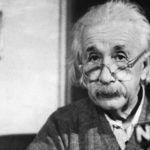Four contributions Einstein has made to our daily lives
Albert Einstein’s Theory of Relativity forever changed the way we understand space and time. But the German genius who was the centerpiece of a conference organized by the BBVA Foundation, “Explore Einstein's universe,” also left his mark on hundreds of technologies that we use daily: from Google Maps to solar panels, from self-lighting street lamps to laser beams. Our lives would be very different if Einstein hadn't been born.

GPS Navigators

All GPS navigators — including mobile applications like Google Maps — function by measuring the distance from one point on Earth to one of many satellites orbiting our planet. The time it takes for the signal emitted by the satellites to reach the receptor is measured to calculate the distance. The Theory of Relativity, published by Einstein in 1915, explains why clocks on satellites are ahead of those on Earth by 38,000 nanoseconds. It doesn't seem like much, but if these nanoseconds weren't accounted for, GPS systems would be off by kilometers.
Laser devices

A year after discovering general relativity, Albert Einstein published his theory of stimulated emission, on which laser device technology is based. Currently, this technology is used in such commonplace activities like reading a bar code or using a pointer in a presentation, but it is also used for delicate surgery or industrial processes that require exact precision.
Photoelectric cells

Without the law of the Photoelectric Effect, for which Einstein received the Nobel Prize in 1921, devices that turn light into electricity, like solar panels, would not be possible. Also, the automatic lighting of street lamps when night falls, the mechanism that prevents elevator doors from closing when there is someone in the way, the device that regulates printer toner, and breathalyzer tests all use photoelectric cells that are based on Einstein's theories.
The Physics of financial markets

Albert Einstein developed the fluctuation-dissipation theorem to explain the random movement that was observed in particles found in liquid or gas. This movement — called Brownian in honor of the Scottish biologist Robert Brown who was the first to observe it — is not very different from price fluctuations seen in stock markets. Since 1970 when this similarity was observed, Einstein's equations have also been used on Wall Street.